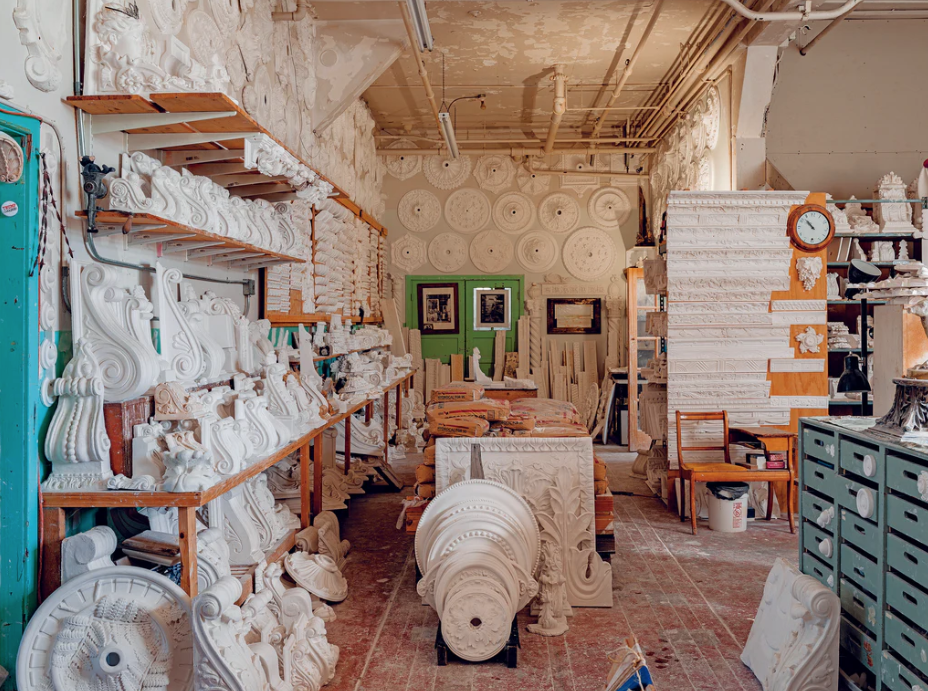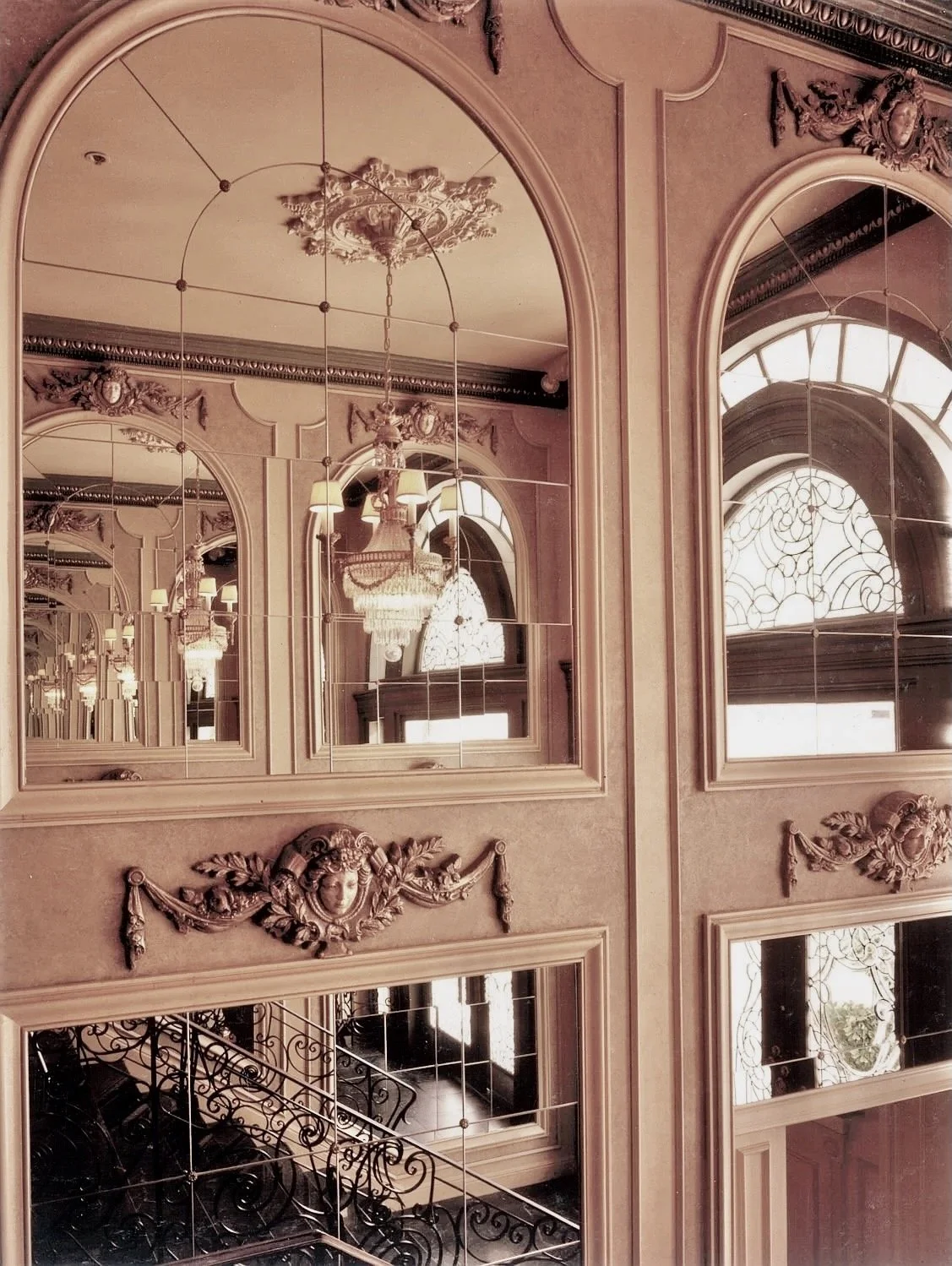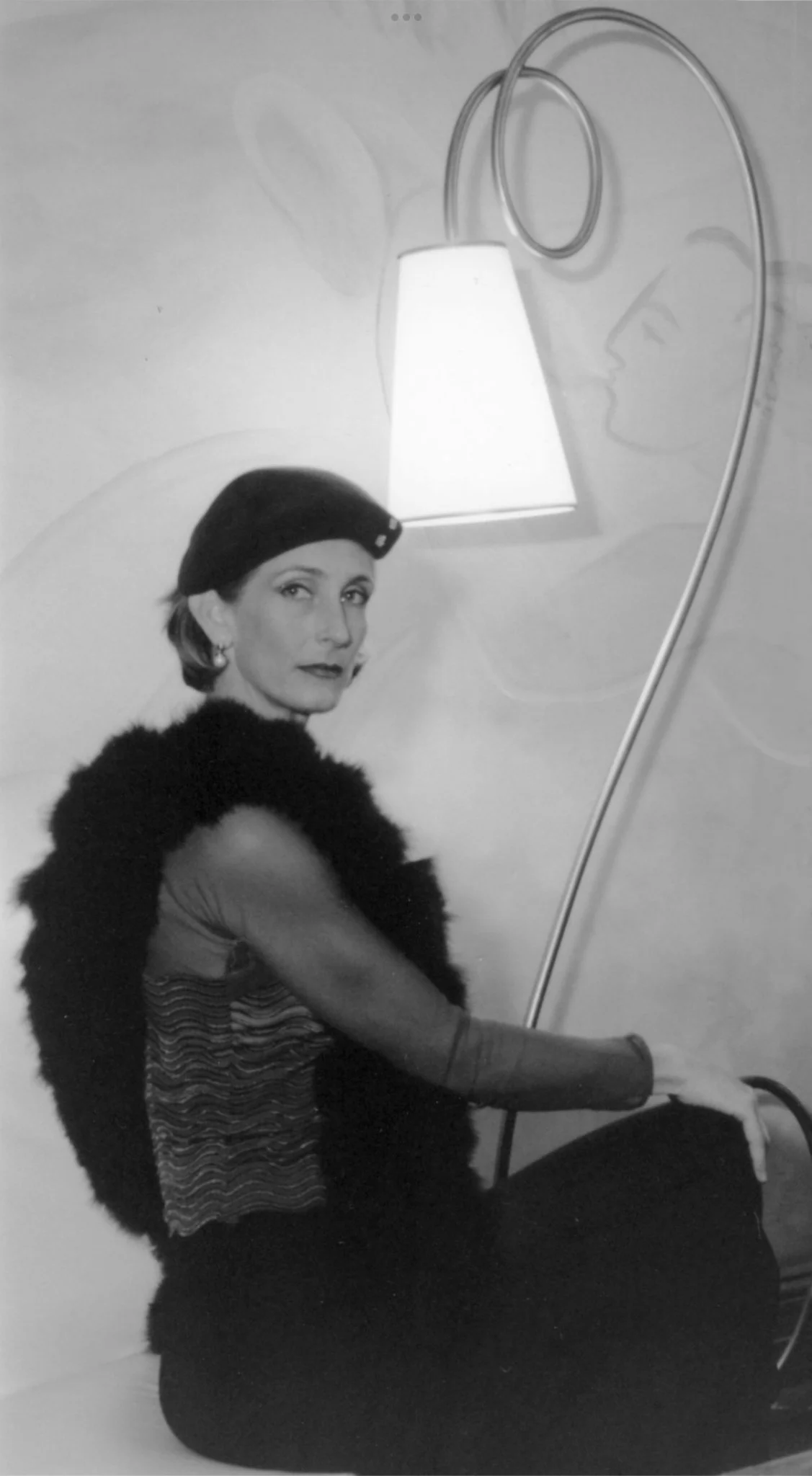Collaborator Profile: Artisan Lorna Kollmeyer
Image: Lorna Kollmeyer Ornamental Plaster, Photographer: Taylor Hall O’Brien
The architect and designer get the glory for a project, while the builder and subcontractors execute their vision. Alward Construction is fortunate to work with many exceptional artisans. One of our favorite collaborators is Lorna Kollmeyer, who runs an ornamental plaster studio at the Torpedo Training Center on Hunter's Point Shipyard. Since 1980, Lorna has supplied architects, designers, contractors, and homeowners with traditional plasterwork crafted with time-honored gypsum-based plaster compositions. Lorna Kollmeyer Ornamental Plaster produces ceiling medallions, cartouches, crown moldings, column capitals, and brackets— the entire array of decorative elements adorning San Francisco's diverse architecture.
AC: You grew up in Southern California. How did that contrast with moving to the San Francisco Bay Area in 1981?
LK: When it came time to be a grown-up, I couldn’t wait to get out of LA; when I first set foot in San Francisco, I didn’t want to leave.
AC: You initially were going to pursue a career in coaching Women's Basketball, but you ended up owning a plaster business. How did that happen?
LK: I grew up playing basketball, and after being a high school All-CIF first-team honoree during my junior and senior years and then a collegiate All-American, I had the incredible opportunity to play on a team in Avignon, France, the year after graduating from Colorado College. I had not yet applied for an assistantship at a University, which would have been the next step toward a coaching career.
I came to San Francisco upon my return to the States on the invitation of a college friend who lived here and offered me a summer job on her land in Cazadero. I was in and out of SF that summer and fell in love with the City. I felt inexplicably at home here, and the sense of wonder and adventure I felt was somehow internalized. My instincts told me there might just be more to Lorna than being a basketball star, and I didn’t know exactly what I was looking for, but I knew I’d find it here. I put the pursuit of a coaching career on hold.
That led to a big uh-oh moment because I had never given a thought to what else I might do for a living! I held a variety of part-time jobs, including working on a remodeling crew and at the JCC Sports Center. Along the way, I met a delightful couple at the JCC named Peter and Helene Marchant, with whom I worked once a week as a helper around their house.
The Marchants had spent the previous fifteen years renovating and flipping dilapidated Victorians. Peter created a collection of molds from original plaster casts from the places they owned to produce castings for their numerous projects. They had set up a small sideline enterprise selling them at Cliff’s Variety on Castro Street. By the time I met them in the early 80s, they lived in a palatial Victorian at the corner of Broderick and Washington and were no longer doing renovations like they had in the past.
One day, Peter turned to me and asked if I knew anyone who wanted to buy a plaster business. I took one look at a ceiling medallion and thought the idea was pretty cool, especially as I could tackle my car insurance payment in one fell swoop by fulfilling an order from Cliff’s! I added plaster casting to my list of occupations, and I worked out of Peter’s basement until the Majestic Hotel job came along. It was then, in 1984, that I landed my first studio at Hunters Point Shipyard. The tale goes on, but that’s how it started!
AC: One of your first projects was an Edwardian mansion, Hotel Majestic, then known as "The Brothel Hotel." What was that project like?
LK: Perfect, next question! Quite a story. A guy from my bicycle racing team worked for a couple of contractors who were bidding on the façade of the Majestic and referred me to them. At this point, I had made only one mold, but Peter and Helene coached me, “If there’s something you don’t know how to do - don’t let on - you’ll figure it out.” It turns out I had never seen a set of blueprints before.
When I met with Alan Klonsky of CK Construction, I was persuaded to sit down in their office and come up with a price that very afternoon, as they needed to submit their numbers the next day. I fumbled my way through an extensive list of items that all needed sculpting from scratch using historical photographs, molded, cast, and sealed in linseed oil, and came up with a bid of $ 20,000.
I saw my bike friend the next week, and he let me know that the next highest bid for the plasterwork was $56K. I was in a state of dread and panic, and prayed that CK would not get this contract. My heart sank when Mr. Klonsky strode into the bike shop where I worked and said, “Let’s get to work - we got the job!”
With angels on my shoulder, it all worked out. I had girlfriends who had graduated from the Art Institute who were eager to help sculpt—and teach me to sculpt—and I was able to secure a studio at Hunters Point. There were change orders, which allowed a few more dollars to flow my way, and it all worked out. To this day, 42 years later, I have not done a job that has that much plaster on the façade!
Hotel Magestic
AC: San Francisco's architectural history is diverse, featuring styles such as Victorian Italianate, Stick, Queen Anne, Edwardian, Mediterranean, and Art Deco. Do you have a favorite period?
LK: That is an unfair question! Although Mediterranean and Deco give me a special thrill.
AC: You collaborated with Alward Construction to restore a Queen Anne Victorian in the Inner Richmond. What was the scope of that project?
LK: Truthfully, I rarely go on-site unless there is a mold to be made that cannot be done in our studio. Alward orders from our collection of patterns, sometimes with my help; other times, they already know precisely what they need. But it’s always exhilarating!
AC: You're located in the historic Torpedo Training Center on Hunter's Point Shipyard. What is it like to work there?
LK: If not for the beautiful old Torpedo Training Center, there would be no Lorna Kollmeyer Ornamental Plaster, or at least not the extensive archive we can house there. It is truly a magical place, with 16-foot-high ceilings, numerous windows, and an abundance of light. We look out upon an open field where blue herons come to catch gopher rockfish. It is a gift to work there and a gift to everyone who visits - you can tell they are gobsmacked by what a beautiful, unusual, and historic environment they have entered. Additionally, we are part of the greater community of Hunters Point Shipyard Artists, and it is a gift to be surrounded by talented, bohemian neighbors.
AC: What is your favorite project that you worked on?
LK: Again, this is unfair, as over the past 42 years, I have had the opportunity to contribute to numerous stunning restorations. If I had to pick, though, I’d say I’m probably most proud of the Majestic, although it was the most challenging.
AC: When you are not beautifying houses, what do you enjoy doing?
LK: I have been singing and playing guitar professionally for over thirty years, and that supplies the creative performance juice that basketball once gave me. I have a few musical projects that are super fun: a band called Malibü Buckéroo - in which I play rhythm guitar and front vocally; I play jazz once a month at a little wine bar in Albany called Chez Mansour; and collaborate with other singers in an all-girl vocal trio called Triage, and another project called Tales of Whoa which lends highly unorthodox interpretations to somewhat familiar songs and originals. I’ve also written a few tunes of my own, which is super rewarding. All in all, I’m fortunate that, with the plaster biz, I can be my own patron and not have to rely on music to pay the bills.
Lorna Kollmeyer as a chantruese



